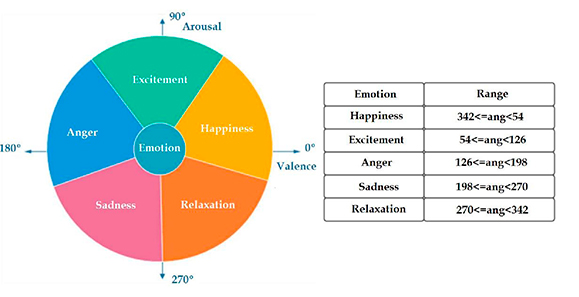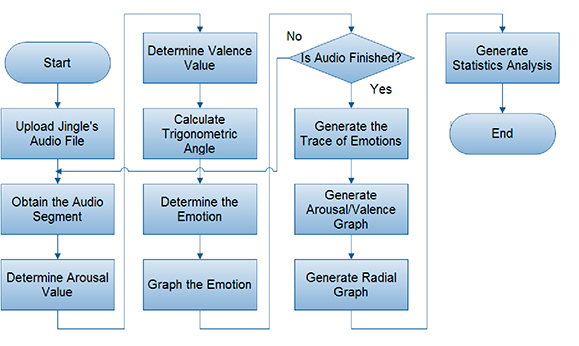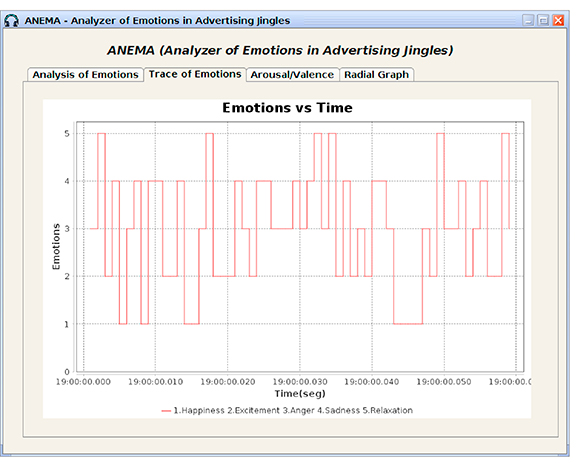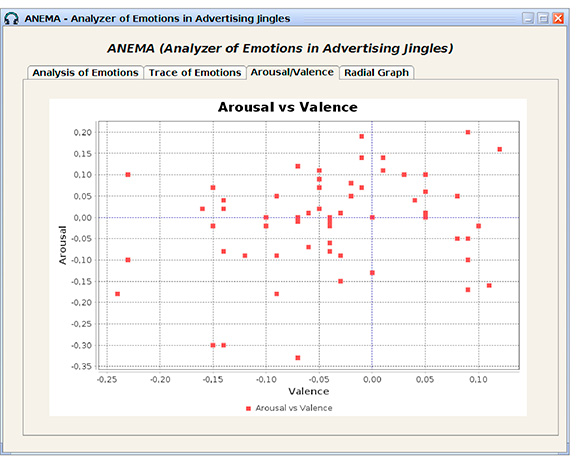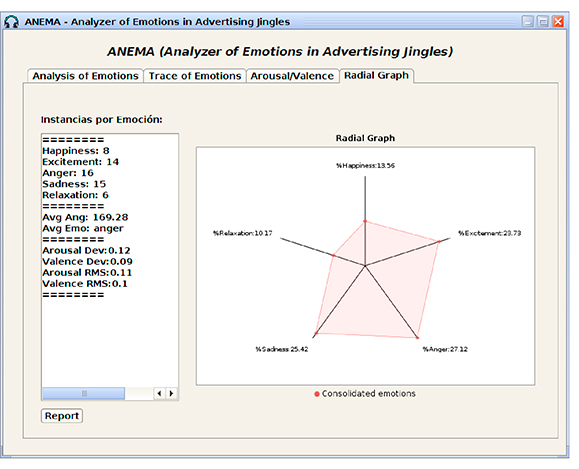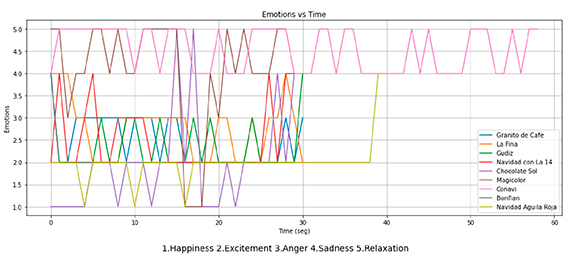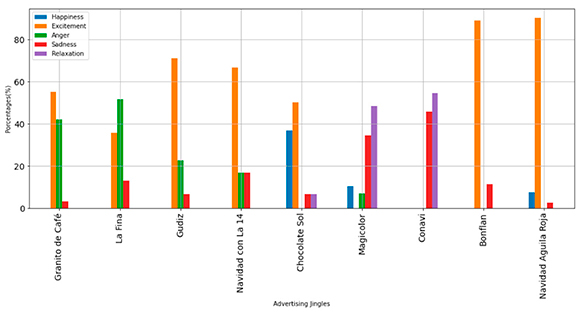1. Introduction
Influencing the will to buy in people and making them remember brands is one of the greatest tasks of advertising. In this sense, one of the most widespread and effective strategies to promote products and services in different media is advertising jingles (López Giraldo 2016; Nomura and Mitsukura, 2015). These can be defined as advertising messages transformed into songs; their lyrics and music have been created specifically to promote an advertisement or campaign. Jingle lyrics can include the product’s price, name, characteristics, brand, and values (Porras Velázquez, 2018). On the other hand, according to Porras (2017) a jingle is a sung advertising message or a song of short duration (from 5 to 60 seconds), easy to remember and used to complement advertisements, in which it is customary to mention the name of the brand or the slogan created for the campaign. In the same way, according to Espinosa Mirabet (2012), an advertising jingle is a musical piece that is related to a product or brand, which can be sung or musicalized. In both cases, it must have two key elements, i) it must be effortlessly remembered by the audience, and ii) the music must be easily associated with the brand.
Music plays a fundamental role in an advertising jingle as it is directly related to the persuasion it generates toward potential clients (Sánchez-Porras, 2013; Shevy and Hung, 2013). It also transcends the boundaries of advertising by acquiring a life of its own and becoming an endearing melody that potential clients unconsciously repeat; it even becomes fashionable (Fernández Gómez, 2005). In this way, a suitable musical design in a jingle contributes to improving the effectiveness of advertising, making it attractive. Then, the structure of the advertisement becomes meaningful by offering continuity to the message transmitted regarding the use of other descriptive ways. Thus, the music in a jingle can elicit a recollection in the consumer that lasts beyond the advertisement campaign, so that the verbal message of the text presented in an unspoken form penetrates the consumer subliminally and more effectively. Hence, advertising without music loses an important contribution in terms of persuasive effects in a way that cannot be understood without the evolution of music (Palencia-Lefler, 2009)
Based on the above, to bring a listener or viewer closer to a brand or product, the music must stimulate and prepare the connection with the emotions experienced to achieve the objective of advertisement communication (López Giraldo, 2016). In the words of Hargreaves and North (2005), music induces mood, allows the identification of cultural movements, influences the behavior of potential consumers, accompanies people in their daily activities, and makes it possible to express ideas and sentiments. According to Brown and Volgsten (2006), there are 6 key aspects associated with the role of music: i) it is a complement to spoken language to reinforce normative behaviors, ii) it is a communication device that serves as an important component in persuasion systems, i) it serves as a symbol of cultural identity, iv) it allows people to be organized according to musical preferences, v) it is an outstanding tool for creating levels of coordination and cooperation in a group, and vi) it is the key to the expression of emotions, the resolution of conflicts, and social play.
Given the emotional connection that music can stimulate in advertising jingles, it is important to consider the different emotions that are distributed throughout the audio track that accompanies the jingle within the multimedia design process. For this reason, the advantages provided by affective computing can be used for the study and adaptation of the emotions of a music track, considering the extraction and analysis of acoustic properties or variables associated with the audio segments that form the track (Bai, Peng, Shi, Tang, Wu, Li, and Luo, 2016; Kim, Lee, Kim, and Yoo, 2011; Solarte, Sanchez, Chanchí, Durán, and Arciniegas, 2016a, 2016b). In this sense, few studies within the topic of advertising have been identified regarding the analysis of the way music creates value and meaning in advertising jingles since most studies focus on the message transmitted and the visual design (Palencia-Lefler, 2009).
Affective computing is a discipline of artificial intelligence that aims at developing systems capable of recognizing, interpreting, processing, and simulating human emotions to improve the interaction between the user and the computer (Baldasarri, 2016). Affective systems are capable of: i) capturing and recognizing the emotions of a user through the measurement of physiological variables like voice, facial expression, etc., ii) processing the data obtained and classifying it using machine learning algorithms to determine an emotional state, and iii) generating the corresponding responses and emotions through different channels: colors, sounds, robots, or virtual characters with facial expressions (Baldasarri, 2016; Hammal and Suarez, 2013; Juca Maldonado, García Saltos, Burgos Bencomo, and Navarro Silva, 2018; Rudovic, 2016). One of the ways of carrying out the emotional analysis of a musical track is through the extraction of acoustic variables such as arousal and valence. These variables allow determining an emotion from Russell’s model and depend on acoustic properties such as: tempo, volume, pitch, among others (Malheiro, Panda, Gomes, and Paiva, 2018; Paltoglou and Thelwall, 2013; Sharma, Gupta, Sharma, and Purwar, 2020; Solarte et al., 2016a).
This article presents the application of affective computing to the analysis of the emotions found in a set of popular Colombian advertising jingles through the development and use of a computational tool called ANEMA (Analyzer of Emotions in Advertising Jingles). The tool allows segmentation, analysis, and extraction of the emotions associated with the different audio segments that form the advertising jingles, considering the acoustic properties of arousal and valence. These properties permit the calculation of emotions over an adaptation of Russell’s model. Therefore, the study developed aims at serving as a reference regarding the use of affective computing for the design of multimedia content focused on advertising that encourages the generation of specific emotions in end users from the auditory content in the jingles.
The remainder is organized as follows: Section 2 describes a set of related works that were considered for the development of this study. Section 3 presents the methodology used in this research. Section 4 shows the results related to the analysis of emotionality in a set of Colombian advertising jingles. Finally, section 5 presents the conclusions and future work derived from the study.
2. State of the art
The review of the literature made it possible to identify different studies on the relationship between advertising and music approaches from different dimensions, as it is explained below.
Sánchez (2015) identifies the preponderant role of music in advertising and television jingles based on a review of the literature. The author also proposes an instrument for the analysis of advertising jingles, which includes the description of the product, the music, the type of sound, the images used, and the type of advertising resource used. This instrument can be used in research that aims at determining the incidence of music within advertising messages.
On the other hand, Porras (2017) analyzes the psychosocial processes of perception and memory in the effectiveness of advertising jingles and shows how historically commercial advertising has made use of emotional persuasion through music to positively affect the perception and memorization of advertisements and brands. He concludes that advertising, in addition to persuading, has the function of advising and informing clients to facilitate decision-making.
Some studies analyze the behavior and response of a group of people to the viewing of both successful and unsuccessful television commercials (Nomura and Mitsukura, 2015). To assess the behavior and reactions of viewers, the researchers used captures of the brain’s electrical impulses reflected in each person’s electroencephalogram. Perception surveys were also used. The study determined that, in the case of successful commercials, people even remembered different words presented to them a month later; these words appeared during the experiment at moments when states of concentration or stress were identified. In the same way, the researchers found out that the same behavior does not occur for unsuccessful commercials, which allowed them to conclude that successful commercials stimulate emotions and the ability to remember.
Furthermore, another research was carried out to explore and identify the advantages of using counting songs within the classroom at the preschool level (Kabadayi, 2014). 120 preschool teachers collected a total of 90 counting jingles used in the classroom activities. These jingles were classified into 3 categories by 10 experts in education: unstructured, semi-structured, and structured; the categories considered the inclusion of words without meaning, the inclusion of some words with meaning, or the inclusion of words with meaning in the jingles, respectively. Finally, the experts concluded that unstructured and semi-structured counting jingles contribute to the development of physical, personal, and social languages in the classroom. Similarly, experts concluded that structured jingles contribute to the development of kinesthetic, musical, bodily, and personal languages.
Another classroom experience was developed at the secondary education level in a music course with students who designed and created an advertisement piece for the promotion of the educational institution (Gillanders and Guillen, 2012). For its creation, the authors developed a total of nine class sessions. The students were socialized about the importance of jingles, the type of music used in jingles, the elements that make up a jingle, examples of jingle advertising, the design of the script, the recording of the commercial, and the voice-overs. The activities developed had positive feedback from the students and allowed the students to get closer to the world of advertising, as well as the role of music in making an advertising jingle successful.
Consequently, the analysis of advertising jingles opens a wide spectrum of studies, as is highlighted below. López (2017) proposes an exploratory and mixed study with the objective of analyzing a set of jingles and advertising spots from the ‘80s in Bogotá, Colombia. The study consisted of reviewing the structure of the selected jingles to identify elements such as rhythm, lyrics, instruments, rhymes, in a way that a relationship between these elements and the concepts of effectiveness and memory capacity can be determined. A focus group answered questions related to the selected advertising jingles. The study concludes that the jingles studied reminded consumers of the existence of the product, helped build a brand image (loyalty and closeness) and generated nostalgia toward the childhood and youth periods.
Rubio-Romero, Perlado-Lamo de Espinosa, and Ramos- Rodriguez (2019) developed a longitudinal study on a set of advertising jingles that were nominated at the “Young People Touched by Publicity” festival in the editions from 2005 to 2016 to determine the keys to success in audiovisual advertising music in young university students. 30 jingles were selected and analyzed by a sample of students from the Faculty of Communication and Arts of the University of Nebrija. The results obtained showed that although there are 73% of jingles based on pre-existing music and 27% based on original music, there are no differences when it comes to preferring one or the other. Regarding the types of music of extradiegetic-diegetic nature, the differences are smaller, 57% versus 43%, respectively. Finally, it was evident that what young people value the most in jingle music is what it makes them feel, preferring emotional and sensitive songs.
Sánchez-Porras (2016) developed a musical analysis on a sample of 160 Coca-Cola advertising spots created between 2010 and 2012 to determine the types of music preferred by Coca-Cola, as well as to identify the brand’s reasons for choosing these types of music and the effectiveness achieved over time. The analysis carried out on the advertising spots sought to classify them into 5 possible categories: tonal, non-tonal, cultured popular, popular, and none. The results obtained allowed the author to conclude that 72% of the advertising spots analyzed correspond to the cultured popular category, followed by the tonal category with 14%, and the popular category with 11%, while the least used classification was the non-tonal with 3%.
Sánchez-Porras and Rodrigo (2017) carried out a study on a sample of advertising jingles created by Coca-Cola, focusing on the analysis of three specific musical variables for each jingle: tempo, tone, and harmony. In this research, 6 musical experts evaluated a total of 50 commercials, classifying the tempo, tone, and harmony in different discrete levels. From the classifications given by the evaluators, the assessments were extrapolated into possible emotions. It was obtained that the music used in Coca-Cola’s audiovisual advertising results in emotional benefits for the audience because it awakens positive emotions.
Regarding emotions and sentiments, Chanchí and Córdoba (2019) conducted a speech analysis about the peace treaty in Colombia. The analysis of emotions was executed by extracting the acoustic properties of the voice throughout the speech. Then, these properties were classified according to Russell´s model. The analysis of sentiments was carried out from the study of polarity (negative, positive, and neutral) of the spoken phrases. The study determined that within the speech emotions, the ones that predominate the most are happiness, sadness, and relaxation while positive polarity is the one that appears the most in the text.
The works identified in the review of literature prove the fundamental role that music plays in advertising jingles since it generates positive emotions in potential clients toward a product or brand. Similarly, few works have studied the emotionality present in the music or audio tracks extracted from advertising jingles. Finally, no proposals were found that focused on obtaining an automatic analysis of acoustic properties such as arousal and valence in the audio tracks of advertising jingles for determining the emotions present in them. In this sense, the present work was developed around a set of advertising jingles from the ’80s and ’90s through the development and use of an automated tool that fragments the audio track of each jingle into periodically spaced segments. The acoustic properties of arousal and valence are extracted to determine the angle within the circumflex or Russell’s model; and thus, determine the emotion associated with each audio segment, as well as the fluctuation of emotions in the analyzed jingle.
3. Methodology
For the development of this study, 4 methodological stages were taken into consideration: selection of jingles, extraction and adaptation of the audio track, obtaining of emotions, and analysis of results (Figure 1). In stage 1, a total of nine Colombian advertising jingles that were popular in the ‘80s and ‘90s were selected from YouTube. In stage 2, the audio tracks associated with each video were extracted using the YTMP3 online tool. The noise present in the jingles was eliminated using the AudioDenoise online tool and the Audacity free tool. In stage 3, from the adaptation of the audio tracks, the tool proposed in this article (ANEMA) was used to segment and analyze the emotion of each fragment to obtain the trace of emotions throughout each jingle. For the process of obtaining emotions, an adaptation of Russell’s model presented in Solarte et al. (2016a) was taken into consideration. The model allows the determination of five possible emotions (happiness, excitement, anger, sadness, and relaxation) from the trigonometric relationship of the acoustic properties of arousal and valence. In this way, using the equation presented in (1), the trigonometric angle that determines or classifies the emotion in Russell’s two-dimensional model is obtained.
Finally, from the reports produced by the tool for each jingle, stage 4 presents a consolidated and comparative analysis of the results to obtain the distribution of the five emotions considered in each of the analyzed jingles.
4. Results and Discussion
This section presents the emotion model used for the analysis of the advertising jingles, the jingles selected for the study, the tool proposed for the extraction of acoustic properties, the calculation of emotions on the advertising jingles; and finally, the results after applying the Analyzer of Emotions in Advertising Jingles.
4.1. Emotions model
Within this project, an adaptation of Russell’s model defined in Solarte et al. (2016a) was considered. This model is made up of five emotions (Figure 2), each one associated with a range of angles within the two-dimensional space of the model. From the values of arousal (y-axis) and valence (x-axis) associated with an audio fragment, it is possible to determine the angle trigonometrically and classify it within the five possible emotions of the model. The variable arousal is a measure of perception of intensity and activity along a musical track, which is related to the tempo (fast/slow), the intensity of the tone (high/low), the pitch (high/low), height or loudness (high/low), and timbre (bright/soft). On the other hand, valence describes the musical positivity transmitted by an audio track, and it is related to the mode (major/minor) and harmony (consonant/dissonant) (Jiang, Rickson, and Jiang, 2016; Naser and Saha, 2021; Solarte et al., 2016a, 2016b)a study of the effects of music listening following induced stress was conducted. Female music education students (N = 200.
Table 1 Selected Jingles
| Jingle | Name | Brand | Duration | Id Youtube |
|---|---|---|---|---|
| 1 | El Granito de Café | Águila Roja | 31 seg | f9WDUpmwRHg |
| 2 | La Fina la Margarina | Grasco | 31 seg | mStwSNbgndY |
| 3 | Gudiz | Jack’s Snacks | 31 seg | F_9bUANOOfo |
| 4 | Feliz Navidad con la 14 | La 14 | 30 seg | 3-xXyLKemrs |
| 5 | Chocolate Sol | Casa Luker | 30 seg | rRyTwHQNA9c |
| 6 | Magicolor | Paper Mate | 29 seg | cvfm-bCVETc |
| 7 | Conavi quiere a la gente | Conavi | 59 seg | GQlNSp7NhQ8 |
| 8 | Bonflan | Alpina | 9 seg | lMTfjS59hnw |
| 9 | Navidad con Aguila Roja | Águila Roja | 40 seg | 3Zuth6VhcHs |
Source: Authors’ own elaboration.
4.2. Advertising Jingles Selected
Table 1 presents the list of selected popular advertising jingles, as well as the brand associated with them and the youtube ID where they were obtained. Each jingle was downloaded and adequate in terms of the noise they presented since most of them are from the ’80s and ’90s.
4.3. Tool Proposed
To conduct the study, a tool that allows the segmentation of the audio track of an advertising jingle was developed, as well as the determination of the emotions associated with each segment using acoustic properties according to the model presented in section 4.1. Thus, Figure 3 presents a flow diagram that illustrates the operation of the developed tool.
According to Figure 3, the advertising jingle audio file was loaded, and 1-second audio segments were progressively obtained. Each segment was determined by the value of the properties of arousal and valence. From the properties of each segment, the angle that allows the determination of the emotion in a two-dimensional space was obtained employing trigonometric operations from the ranges considered in Figure 2. As the emotion was obtained, the tool displayed the way emotions fluctuate overtime for the advertising jingle analyzed in real-time. The previous process was repeated by the tool until the different fragments of the jingle were analyzed. When all the fragments are done, the tool allowed generating a step graph with the trace of emotions throughout the jingle, as well as a scatter plot that illustrated how the variables arousal and valence are distributed in Russell’s two-dimensional space. Also, it allowed generating a radial graph that showed how the emotions were distributed in percentage terms in the jingle. Finally, the tool permitted obtaining different statistical measures on the variables of arousal and valence obtained throughout the jingle. Figure 4 shows the main interface of the Analyzer of Emotions in Advertising Jingles tool, developed in the Java language, made up of four tabs: “Analysis of Emotions”, “Trace of Emotions”, “Arousal/Valence”, and “Radial Graph”.
In the “Emotion Analysis” tab, it was possible to attach the audio track of the advertising jingle in an MP3 or WAV format by pressing the “Load Audio” button, which allowed the duration of the file to be obtained and loaded into memory for further processing. When the “Process” button was pressed, after loading the file, the tool began to segment the audio into 1-second fragments using the free FFmpeg library in the background, subsequently obtaining the arousal and valence properties for these segments using the openEAR library in the background (Eyben, Wöllmer, and Schuller, 2009). From these properties, the angle in Russell’s two-dimensional space was mathematically determined using the ranges presented in Figure 2. The timestamp of the segment, as well as the variables of arousal and valence, the angle, and the determined emotion were presented in real-time in the “Arousal/Valence” text area. In the same way, as the variables arousal and valence were obtained, they were presented in real-time in the Time versus Emotions graph. As an example, Figure 4 shows the processing of the file “example.wav”, which has a duration of 59 seconds.
Figure 5 shows the “Emotion Trace” tab, which displays a graph with the fluctuation of the emotions of the loaded and analyzed file in the “Emotion Analysis” tab. The x-axis shows the time in hour format, while the y-axis shows the 5 emotions of the model presented in section 4.1. As an example, Figure 5 shows the step graph resulting from the analysis of the 59-second audio “example.wav” from Figure 4.
On the other hand, Figure 6 shows the “Arousal/Valence” tab that displays a graph with the dispersion that relates the variables arousal and valence for the jingle loaded and analyzed in the “Emotion Analysis” tab. Thus, Figure 6 shows the distribution of the arousal and valence values corresponding to the 59-second “example.wav” audio segments loaded. In this case, most of the points are in the negative valence quadrants, which is why emotions are dominant in the audio track “example.wav” such as “anger” and “sadness”, concurring with the trace in Figure 5.
Finally, Figure 7 shows the “Radial Graph” tab, which allows displaying a spider web graph with the distribution percentages of the five emotions within the advertising jingle that is loaded. This tab shows some statistical calculations associated with the number of segments per emotion, the average of angles obtained, and the emotion associated with that angle. Likewise, other statistical measures are presented such as the standard deviation of arousal and valence, in addition to the RMS value or effective value of these variables. In this tab, it is possible to generate a .csv report with the results of the analysis obtained from the uploaded file. Thus, it is observed how for the “example.wav” audio track, the emotions with the greatest presence in the analyzed segments are anger (27.12%), sadness (25.42%), and excitement (23.73%). On the other hand, the average angle of the different segments of this audio track is 169.28 degrees that correspond to the “anger” emotion.
4.4. Advertising Jingle Analysis
This section presents the results of the tool applied to the advertising jingles in Table 1. Thus, Figure 8 shows the fluctuation of emotions over time for the 9 jingles analyzed. It is worth mentioning that the fluctuation is given by the emotions obtained for each of the audio fragments, which can be classified from the acoustic properties of arousal and valence into five possible emotions: happiness, excitement, anger, sadness, and relaxation.
According to Figure 8, there is a greater density of fluctuation lines between emotions 2 and 4 (excitement and sadness) in most of the advertising jingles, agreeing with Figure 9 where the general percentage distribution of the emotions is presented in all the jingles analyzed, considering the total count of the emotions associated with the different segments in the jingles. Thus, Figure 9 reveals that the “excitement” emotion has the highest appearance in the segments with 44.48%, followed by “sadness” with 18.28%. In the same way, it is appreciated how the emotion that has the lowest appearance in the jingles segments is “happiness” with a percentage of 5.86%. Similarly, the sum of the percentages of “happiness”, “anger”, and “relaxation” do not exceed the percentage of “excitement”. It is important to emphasize that “excitement”, according to the model in Figure 2, corresponds to a high value in the arousal variable and a low value (positive or negative) in the valence variable; that is, it is associated with songs with the characteristics of fast tempo, high pitch intensity, high pitch, high loudness, and bright timbre. In this way, most of the music of the jingles analyzed presents a set of characteristics that seek to evoke a high emotionality or level of excitement in the listener.

Source: Authors’ own elaboration.
Figure 9 Total percentage distribution of emotions in advertising jingles
Regarding the specific analysis of emotions for each advertising jingle, Table 2 shows the percentage distribution of emotions for each of the jingles in Table 1. The values were obtained from the count of segments from each audio track that belongs to any of the five emotions considered in Figure 2. Likewise, Table 2 shows the dominant emotion (the one that has the highest percentage of participation within the five possible emotions that a jingle can have).
Table 2 Percentage distribution per jingle
| Jingle | Happiness (%) | Excitement (%) | Anger (%) | Sadness (%) | Relaxation (%) | Dominant Emotion |
|---|---|---|---|---|---|---|
| Granito de Café | 0.00 | 54.84 | 41.94 | 3.23 | 0.00 | Excitement |
| La Fina | 0.00 | 35.48 | 51.61 | 12.90 | 0.00 | Anger |
| Gudiz | 0.00 | 70.97 | 22.58 | 6.45 | 0.00 | Excitement |
| Navidad con La 14 | 0.00 | 66.67 | 16.67 | 16.67 | 0.00 | Excitement |
| Chocolate Sol | 36.67 | 50.00 | 0.00 | 6.67 | 6.67 | Excitement |
| Magicolor | 10.34 | 0.00 | 6.90 | 34.48 | 48.28 | Relaxation |
| Conavi | 0.00 | 0.00 | 0.00 | 45.76 | 54.24 | Relaxation |
| Bonflan | 0.00 | 88.89 | 0.00 | 11.11 | 0.00 | Excitement |
| Navidad Águila Roja | 7.50 | 90.00 | 0.00 | 2.50 | 0.00 | Excitement |
Source: Authors’ own elaboration.
In Table 2, the dominant emotion in 6 out of the 9 jingles analyzed is “excitement”, followed by the “relaxation” emotion present in 2 jingles; “anger” is present in 1 jingle. Similarly, the emotions that are present to a greater extent after “excitement” are “anger” and “sadness”, each one appearing in the second position on 3 jingles. The previous results are better appreciated in the bar graph presented in Figure 10, where the percentage of appearance of the 5 emotions in the analyzed segments is shown for each jingle.
According to Figure 10, in the 4 advertising jingles “Gudiz”, “Navidad con La 14”, “Bonflan”, and “Navidad Águila Roja”, the dominant emotion “excitement” exceeds 65% of presence in these jingles. In the same way, in the 5 remaining advertising jingles “Granito de Café”, “La Fina”, “Chocolate Sol”, “Magicolor”, and “Conavi”, the dominant emotion is in the range of 48% to 55%. Finally, the advertising jingle that presents the lowest standard deviation of the distribution of emotions is “Magicolor” with 15%, while the jingle that presents the greatest deviation is “Navidad Águila Roja” with 43.4%. The “Magicolor” jingle is the only one that presents, at the percentage level, the contribution of four emotions (happiness, anger, sadness, and relaxation), while the “Navidad Águila Roja” jingle is the one that presents a higher value than the dominant emotion “excitement” with 90%. The previous results show that although the dominant emotion is “excitement” in most jingles, to generate a greater attraction in potential clients, they must be complemented by other emotions with a lower arousal value or with a lower valence value, generating an auditory compliment. In this sense, Figure 10 shows how the jingles whose dominant emotion is “excitement” are complemented by other emotions such as “anger”, “sadness” and “happiness”, which have other ranges of values for the properties of arousal and valence.
5. Conclusions and future work
Affective computing is an emerging field of research that has a potential for application in different contexts to promote the design of advertising jingles that together with music allow the stimulation of specific emotions in potential clients and generate awareness of the product and brand. In this sense, the determination of the acoustic properties of arousal and valence becomes important to objectively obtain an emotion within an audio fragment based on Russell’s two-dimensional model.
As few studies evidenced the focus on the musical analysis of advertising jingles, specifically on the affective analysis of the musical content that accompanies the advertising jingles, this article proposed the development of a study based on affective computation for the objective determination of emotions within a set of popular advertising jingles in Colombia from the eighties and nineties. This study aims at being a reference both in the design and the evaluation of the emotions that are transmitted through the audio track of an advertising jingle.
For the implementation of the study presented in this article, the ANEMA (Analyzer of Emotions in Advertising Jingles) tool was developed; it enables the automatic segmentation of the audio track into different fragments where the acoustic properties of arousal and valence are extracted. In turn, the properties allow determining a trigonometric angle by which the emotion associated with each audio fragment is obtained within the circumflex or Russell’s model. Thus, the tool takes advantage of the segmentation process, the calculation of acoustic properties, and the advantages provided by the free libraries FFmpeg and openEAR respectively.
As a result, it can be concluded that the emotion with the greatest presence when analyzing the total fragments of the 9 jingles understudy is “excitement”. In the same way, when analyzing each advertising jingle in a specific way, the dominant emotion is “excitement” in 6 of them while the remaining 3 are associated with the emotion’s “relaxation” and “anger”. The emotion “excitement” in jingles refers to a low value (positive or negative) of valence and a high value of arousal, which means that the audios or audio fragments with this emotion correspond to songs with the following characteristics: fast tempo, high pitch intensity, high pitch, high loudness, and bright timbre.
Finally, although the dominant emotion in most jingles at the audio level is “excitement”, this emotion is accompanied by other emotions such as “anger”, “sadness”, and “happiness”, this allows us to complement and do more immersive content for listeners. In this way, when designing the audio of the advertising jingles, it is not only necessary to guarantee the dominance of emotions such as “excitement” or “happiness”, but also to include other types of emotions with lower values of arousal and valence. As future work derived from this research, it is proposed: i) to link the present study with the analysis of feelings regarding the lyrics of the jingles, ii) to evaluate other two-dimensional models with more than 5 emotions through the tool proposed.















